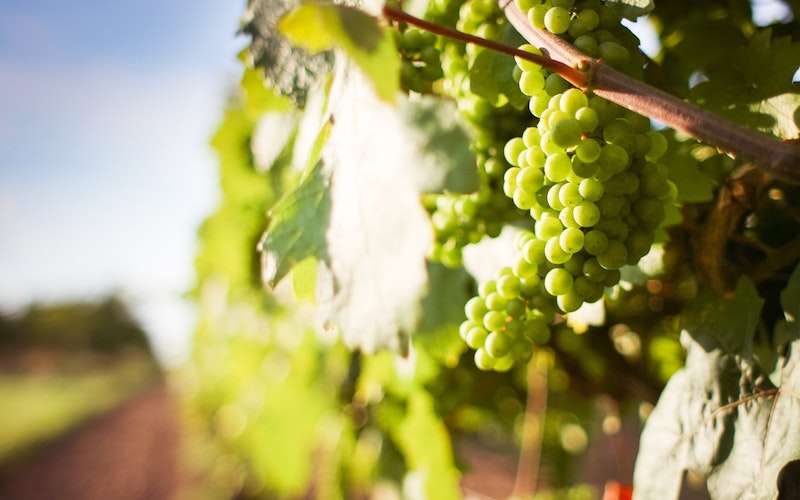What Is Wine? Part 2
Episode #2 of the course The ultimate beginner’s guide to wine by Paul Kalemkiarian
Hi!
Yesterday we looked at what is (and isn’t) wine and explored the winemaker’s role. Today we’ll look at the conditions that impact a wine’s merit. To grow quality grapes that make quality wine, you must look at a number of factors.
Climate
The climatic conditions demanded by winemaking vines are extremely precise. Ideally, winters should be cold enough for the vine to lie dormant and conserve all of its growing energy until spring. From spring until harvest, the most important element is the sun. But not too much—no temperate fruit responds well to so much luxury. Too long or hot a blast encourages growth to be too prolific and too quick to concentrate the subtleties of flavor.
The wine-producing regions of the world lie in two defined bands around the globe: the moderate, temperate zones between 50° and 30° latitude in the northern hemisphere and 30° and 50° latitude in the southern. This includes regions in France, Italy, Germany, and the United States, as well as Chile, Argentina, South Africa, Australia, and New Zealand, among others. Within these bands, in general, fine wines are made in the cooler areas furthest removed from the equator, leaving the hotter terrain for the production of high-yield wines of lower quality.
Location
The best vineyards are sited in relatively cool areas to prevent the vine from over-stretching itself. Maximum use must be made of the precious and sometimes elusive summer sun. To make wine, enough sugar must be present in the grape to be converted by yeast into alcohol. Sugar is put in the grapes by the sun. The best location for a vineyard is set part way up on a south-facing slope in the northern hemisphere or a north-facing slope in the southern hemisphere, which, from dawn until dusk, catches as many of the sun’s rays as possible.
Another advantage of sloped ground is that the vines are well drained. Slopes also lessen the chance that the vines are hit by frost. The lowest part of a slope is better off, but it still suffers from any damp conditions hanging around the flat land, particularly if a stream or river is running through it. Higher altitude causes cooler temperatures that inhibit ripening. The top of the hill is no better than the bottom, suffering from cool temperatures, wind, and reduced direct sunlight. For this reason, hilltops are covered by trees in the best wine-growing areas of France.
Water and Soil
Like most living things, grapes consist largely of water, thus so does wine. The majority of water in a grape originates from the soil. Different soil types affect the taste of wine. Around the world, soil varies considerably. Conditions may repeat themselves, but often a particular region’s geology is unique, accounting for the individuality of its wine.
Many vineyards are perched on the side of river valleys in well-drained gravel deposits. Vines do better in poor, well-drained soils that make them plunge their roots deeper to find water and goodness. The great wines of Bordeaux come from gravel soils—mature, tannic red wines with a good balance of acidity.
The granite vineyards of the Southern Rhône, home of Châteauneuf-du-Pape and Tavel Rosé, are littered with huge “pudding stones,” making the cultivation of virtually anything seem impossible. Once vines are established, the stones act as reflectors, bouncing the heat from the sun back onto the grapes. This produces big, high-in-alcohol reds and the most famous dry rosé in the world.
Chalk, too, drains very well and makes grapevines really work for a living. Not all vine varieties like predominantly alkaline soil; vines are as fussy as roses or hydrangeas. Those that do best on chalky hillsides produce white wines of unique character such as the Chardonnay, which forms part of the inimitable blend for Champagne.
The richer minerals found in slate-y soils suit some vines—and styles of wine—admirably. The alluvial deposits on the banks beside the Rhine and Moselle rivers in Germany are responsible for the delicate fragrance of the gentle, fruity local wines. Some of the best vineyards are on precipitous, barren-looking slopes. The locals say: “Where the plough may go, no great wines grow.”
Now you know a little more than you did before. Stay tuned for the next lesson; we’ll explore how wine is made.
Recommended book
Share with friends

